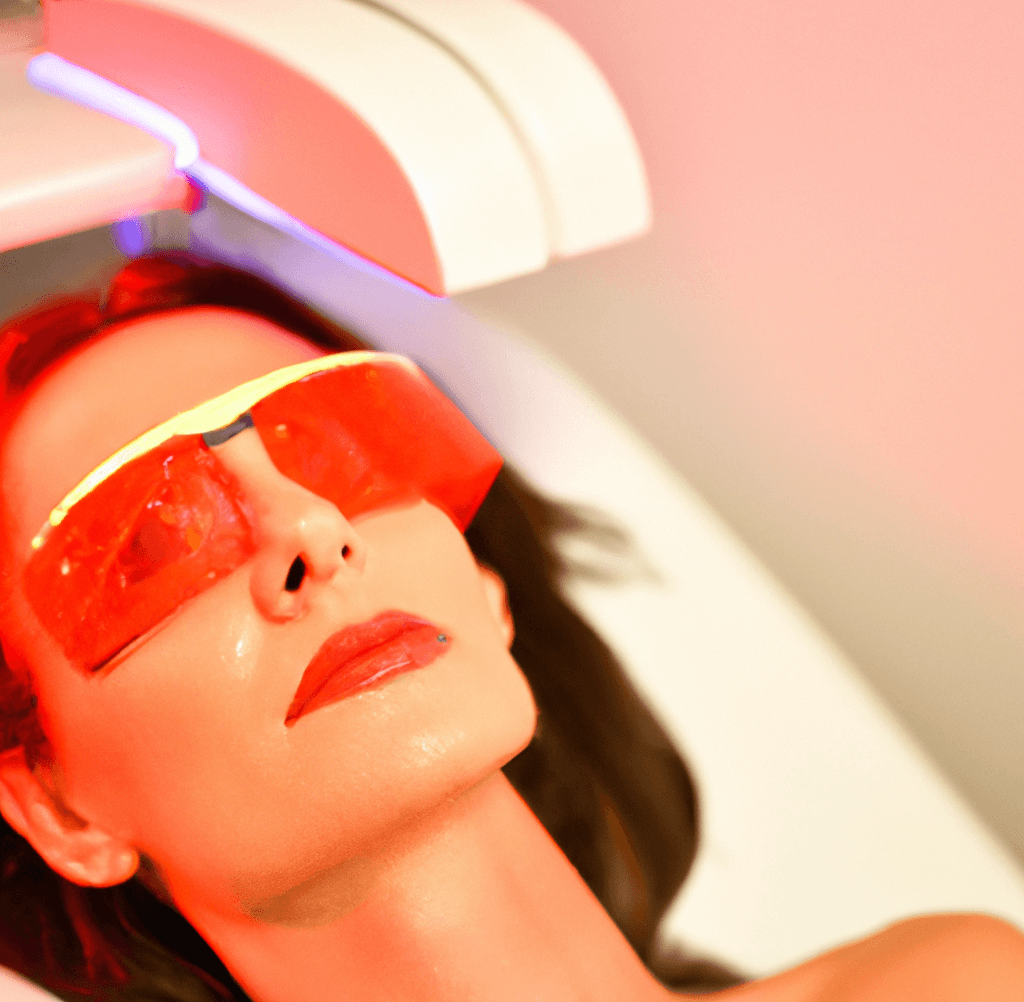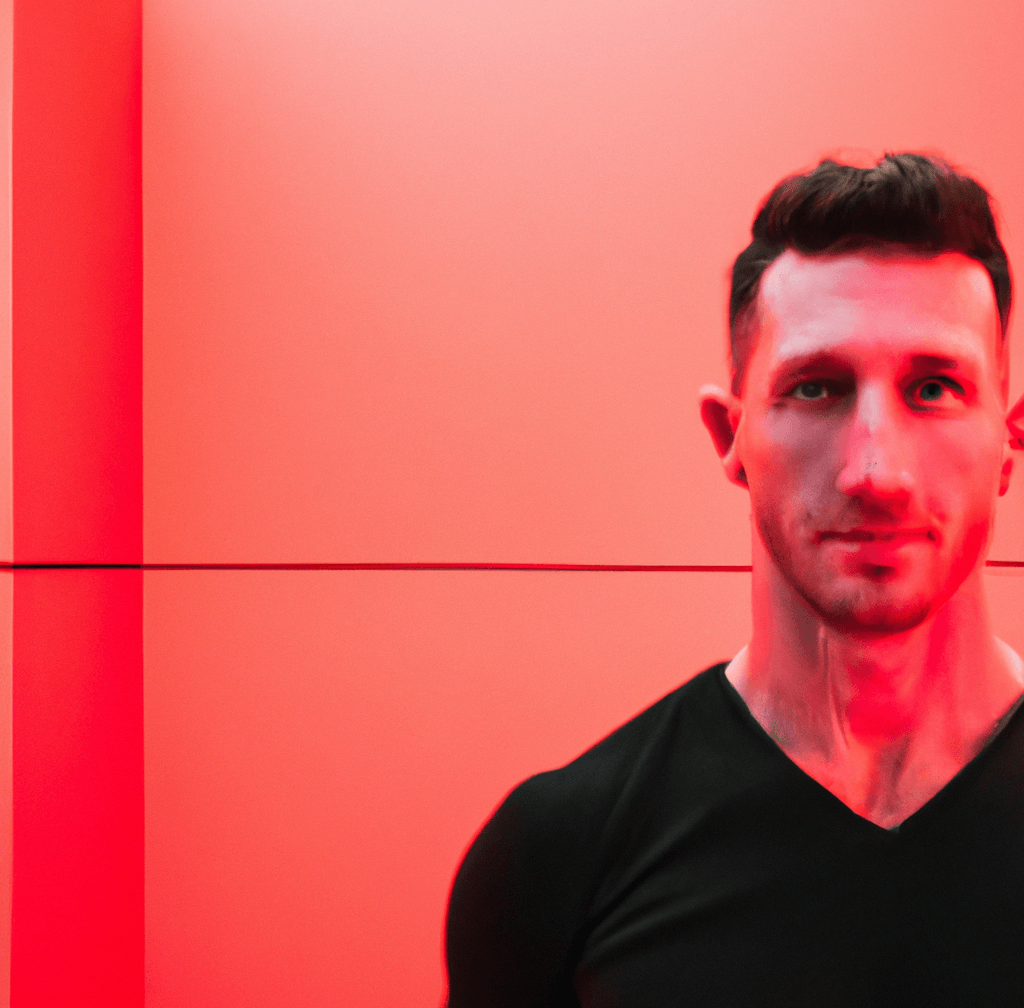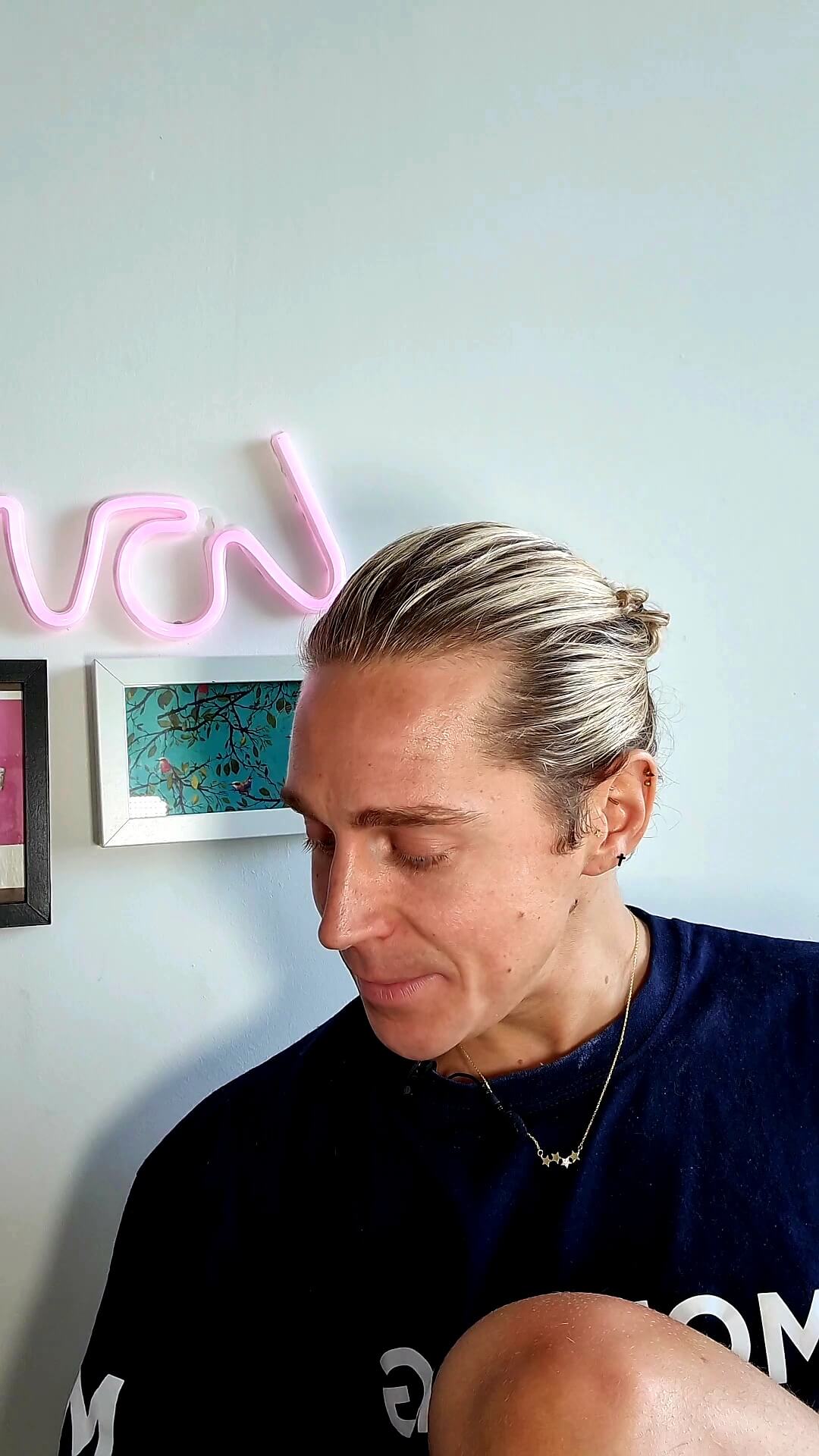Red Light Therapy | Biohacking your body
12 November 2023 | James Kearslake
Table of Contents
Fun Fact
NASA played a role in developing red light therapy in the 1980s. NASA experimented with red light therapy to promote plant growth in space; its research led to the discovery of its health benefits for humans and contributed to the development of modern red light therapy devices.
What is Red Light Therapy
An incredible piece of kit that is able to heal wounds, reduces pain, inflammation, and scarring, and leaves skin looking rejuvenated, it’s a surprise that red light therapy still isn’t as widely known in wellness spaces.
Also known as low-level laser therapy (LLLT), photobiomodulation, or simply RLT, this innovative treatment utilises specific wavelengths of red and near-infrared light to stimulate various biological processes beneath the skin. This stimulation activates cellular-level healing, enhances blood flow, and promotes the production of collagen and elastin.
Available in some beauticians, spas, and wellness centres, finding somewhere with red light therapy can be difficult, but is well worth the journey if you do. Its benefits are entirely natural and uses the body’s own healing response to get the desired effect.
It can be particularly beneficial for those with skin conditions like eczema, psoriasis, dermatitis, and those who experience acne, blemishes, or rosacea. It is also known to reduce sun damage, sun spots, and wrinkles.
Red light therapy is a non-invasive, non-thermal, and non-ablative form of phototherapy that employs specific wavelengths of red (630-660 nanometers) and near-infrared (810-850 nanometers) light to stimulate cellular function.
The term ‘non-ablative’ means a treatment that does not remove or damage the outer layer of tissue. In the case of non-ablative procedures, the goal is to achieve therapeutic effects within the skin without causing significant damage to the surface layer. This is in contrast to ablative procedures, which involve the removal of the outer layer of skin, often with the intention of promoting regeneration and the growth of new, healthier skin.
Red light therapy, often administered via LED lights or laser devices, has gained popularity for its ability to penetrate the skin and affect various tissues and cells without damaging the surface layer. By using a process which activates the body’s own healing process, it remains a natural and risk-free treatment, that works better than man-made, topical solutions.

Red Light Therapy Stimulates Biological Processes
- Mitochondrial Activation: Its primary process is activating our mitochondria, which leads to a series of reactions and result in a higher production of adenosine triphosphate (ATP). ATP is the energy source for our cells and is essential for various cellular processes including cellular repair, maintenance, and the synthesis of biomolecules. The increased ATP levels, along with other signalling pathways activated by red light therapy, also stimulates protein synthesis, DNA repair, and the production of antioxidant enzymes, processes which all maintain the health and proper functioning of our cells.
- Promotes Blood Flow: RLT also promotes blood circulation, which helps transport nutrients and oxygen to all parts of the body. From a physiological perspective, this increases nutrient delivery to our organs, aiding their individual cellular process, repair, and reducing the damaging effects of oxidative stress and inflammation. From a cognitive perspective, improved blood flow is critical for cognitive performance. By increasing the flow of oxygen and nutrients to the brain, we remain sharper, more focused, and ward of brain fog and cognitive decline.
- Collagen Production: Also a result of the increase in ATP production, the body increases production of collagen and elastin under red light and near red light therapy. The enhanced collagen and elastin synthesis contribute to tissue repair and remodelling, which is particularly beneficial for individuals with aging skin, scars, or those seeking improvements in skin tone and texture.

Uses of Red Light Therapy for the Body
Red light therapy offers a non-pharmacological approach to the body’s natural healing process.
Red light therapy can be used to support:
- Pain Management – RLT has demonstrated effectiveness in reducing pain and inflammation. It is commonly used to alleviate symptoms from conditions like arthritis, joint pain, and muscle soreness. By increasing blood circulation and reducing inflammation, it promotes the body’s natural healing processes.
- Skin Rejuvenation – One of the most popular uses of red light therapy is in the field of aesthetics. It can improve the appearance of skin, reducing wrinkles, fine lines, and acne scars. The increase in collagen production leads to firmer, more youthful looking skin, with a fresh and rejuvenated skin tone.
- Wound Healing – Studies have shown that RLT can accelerate the healing of wounds, cuts, and burns. The therapy’s ability to stimulate cell growth and increase blood flow promotes faster recovery.
- Hair Regrowth – Red light therapy can stimulate hair follicles, leading to hair regrowth in individuals with conditions like androgenetic alopecia. It’s a non-invasive alternative to medications or hair transplant surgery.
- Mood and Sleep Improvement – RLT users also report improved mood and sleep quality after starting red light therapy. By modulating the production of serotonin and melatonin, it promotes the natural sleep cycle within us, and can help individuals suffering from sleep disorders or insomnia.
- Weight Loss – RLT can also be a supporting factor in weight management by reducing appetite and promoting fat loss. However, red light therapy does not replace the need for a healthy, balanced diet, and regular exercise for effective weight management, optimal physical health, and peak cognitive performance.
Why Red Light Therapy
Red light therapy is a non-invasive, natural way to active the body’s own healing response.
By avoiding man-made products, medications, or toxins, we are giving our body the best option at healing itself from the inside out, without unwanted or damaging side effects.
We recommend red light therapy for several reasons:
- Non-Invasive
Red light therapy is non-invasive, making it a safer alternative to surgeries or medications. It doesn’t cause discomfort or pain, and does not result in serious side effects.
- Drug-Free
RLT provides a drug-free approach to numerous health conditions. It is particularly valuable for individuals seeking relief from muscular or joint pain, inflammation, painful skin conditions, or burns, as well as those who prefer natural remedies over pharmaceutical products.
- Minimal Side Effects
While some individuals may experience mild side effects like temporary skin redness, these are short-lived and mild compared to the potential side effects of pharmaceutical drugs.
- Safe for All Ages
Red light therapy is safe for people of all ages, from infants to the elderly. It can be used as part of a holistic approach to wellness.
- Convenient
With the availability of at-home red light therapy devices, individuals can enjoy the benefits of RLT in the comfort of their own homes, on their own schedules. Red light panels are being installed in homes across the UK which people use while working, reading, and working out. Its benefits for the body when used daily are worth investing in a quality panel with higher strength. We recommend the brands below.
Potential Risks of Red Light Therapy
While red light therapy is safe, it’s important to known potential risks of using red light therapy:
- Eye Protection: Direct exposure to the eyes should be avoided, as it may cause damage to the retina. Always use protective eyewear when undergoing RLT treatments.
- Skin Sensitivity: Individuals with sensitive skin may experience temporary redness or irritation. It’s essential to start with shorter sessions and gradually increase the duration.
- Medical Conditions: If you have specific medical conditions or are taking medications, consult with a healthcare professional before starting red light therapy.
- Device Quality: Ensure that the RLT device you use is of high quality and meets safety standards. Poorly designed or cheap devices may pose a risk.
Is Red Light Therapy Natural or Man-made
Red light therapy (RLT) is a man-made therapeutic technique that uses specific wavelengths produced by light-emitting diodes (LEDs) or laser devices. These wavelengths are not naturally occurring in the same way that sunlight is a natural source of light.
However, while specific wavelengths used in RLT are not natural in the sense that they are not emitted by the sun or other natural light source, they are designed to mimic and harness the beneficial aspects of naturally occurring light. Therefore, the therapy is considered natural in the sense that it uses a naturally occurring radiation, ie light, and stimulates the body’s natural healing processes.
Red Light Therapy VS. Ultraviolet Rays
Red light therapy and ultraviolet (UV) rays are two different types of light therapy with distinct properties and effects on the body.
They also come with differing risks, given ultraviolet light can be the cause of skin cancer.
The ways in which red light therapy differs is numerous:
- Wavelength:
- Red Light Therapy – Red light therapy uses red and near-infrared light in the visible and near-infrared spectrum, typically in the 630-850 nanometer range. These wavelengths are longer and less energetic than UV rays.
- UV Rays – UV rays, on the other hand, include UVA (long-wave), UVB (medium-wave), and UVC (short-wave) rays. UV rays have shorter wavelengths and are more energetic compared to red light.
- Purpose and Effects:
- Red Light Therapy – Red light therapy is primarily used for its therapeutic and healing properties. It stimulates cellular function, promotes tissue repair, reduces inflammation, and has applications in pain management, skin rejuvenation, and other health and wellness treatments.
- UV Rays – UV rays can be harmful to the skin and can cause damage, including sunburn, premature skin aging, and an increased risk of skin cancer. UV rays are used in controlled settings for purposes like tanning, but excessive exposure to them can be detrimental to health.
- Safety:
- Red Light Therapy – Red light therapy is generally considered safe when used properly. It’s non-invasive, and there are no immediate health risks associated with it.
- UV Rays – UV rays, particularly UVB and UVC rays, can be harmful to the skin and eyes. Overexposure to UV rays can lead to various health issues, including skin cancer and eye damage. Protective measures, such as sunscreen and protective eyewear, are essential when exposed to UV rays.
Can Red Light Therapy Cause Skin Cancer
Red light therapy, which primarily uses red and near-infrared light in the visible and near-infrared spectrum, is generally considered safe and is not associated with an increased risk of skin cancer.
In fact, it is sometimes used to promote skin health and rejuvenation. The wavelengths used in red light therapy do not have the same harmful properties as the ultraviolet (UV) rays that are commonly linked to skin cancer.
Skin cancer can result from overexposure to UV radiation, especially UVB and UVC rays. UV radiation from the sun or tanning beds can damage DNA in skin cells, leading to mutations that can eventually result in the development of skin cancer.
However, it’s important to note that while red light therapy itself does not cause skin cancer, it’s essential to use reputable and safe devices for RLT, follow recommended guidelines, and protect your eyes from direct exposure.
Inappropriate use of red light therapy devices or using devices that emit UV radiation along with red light could potentially be harmful.
Final Thoughts
Red light therapy is an area of growing interest and I expect in several years will be a standard treatment used by many.
It has a remarkable ability to stimulate cellular function, reduce pain, and enhance skin health, which I think gives it the potential to become more widely used than traditional, ablative skin treatments that can cause damage to the surface layer skin.
As science continues to research treatments that naturally activate the body’s own cellular functions, I am confident red light therapy will evolve and is likely to be adopted in healthcare, and wider wellness facilities.
As someone living with eczema, and myself now beginning to show the signs of irreversible aging, a red light therapy panel is the next investment I’ll be making for my ever evolving biohacking toolkit.
Botox is great, but red light therapy is better.
Who is James Kearslake?
Having been biohacking my mind and body long before it became fashionable, I’ve always lived by the benefits of nature’s resources to improve cognitive and physiological performance. Using my years of experience, products, and wellness practices, I’m now helping others elevate their cognitive performance to help build the life they want. I save you the time I’ve spent learning, so you can focus your time on building.
Proudly AI Supported
I proudly use AI to support development of my articles. As a heavily dyslexic person, writing can be a time consuming process with words often jumbled up and sentences the wrong way round. AI has become my crutch; allowing me to share the immense interest in my mind, while making content creation quicker and more accurate. AI is my benefit.
Did you find this useful?
If so, please do share it with others who may also benefit from it.
Affiliate Policy
We only ever recommend products we know offer value to our readers and that we use ourselves.
When recommending these products, we often include affiliate links so that we earn a small commission on sales made, at no expense to you as the reader.
Affiliate commissions are similar to an advertising fee which retailers pay to website owners, and is often the only way website owners can earn money through the content they create. Therefore, we hope you can support us by using our affiliate links if you decide to purchase products after reading our content, as it helps keep the website operating.
Thank you for always sticking by us, and don’t forget to join our newsletter to get ground-breaking content direct in your inbox.

